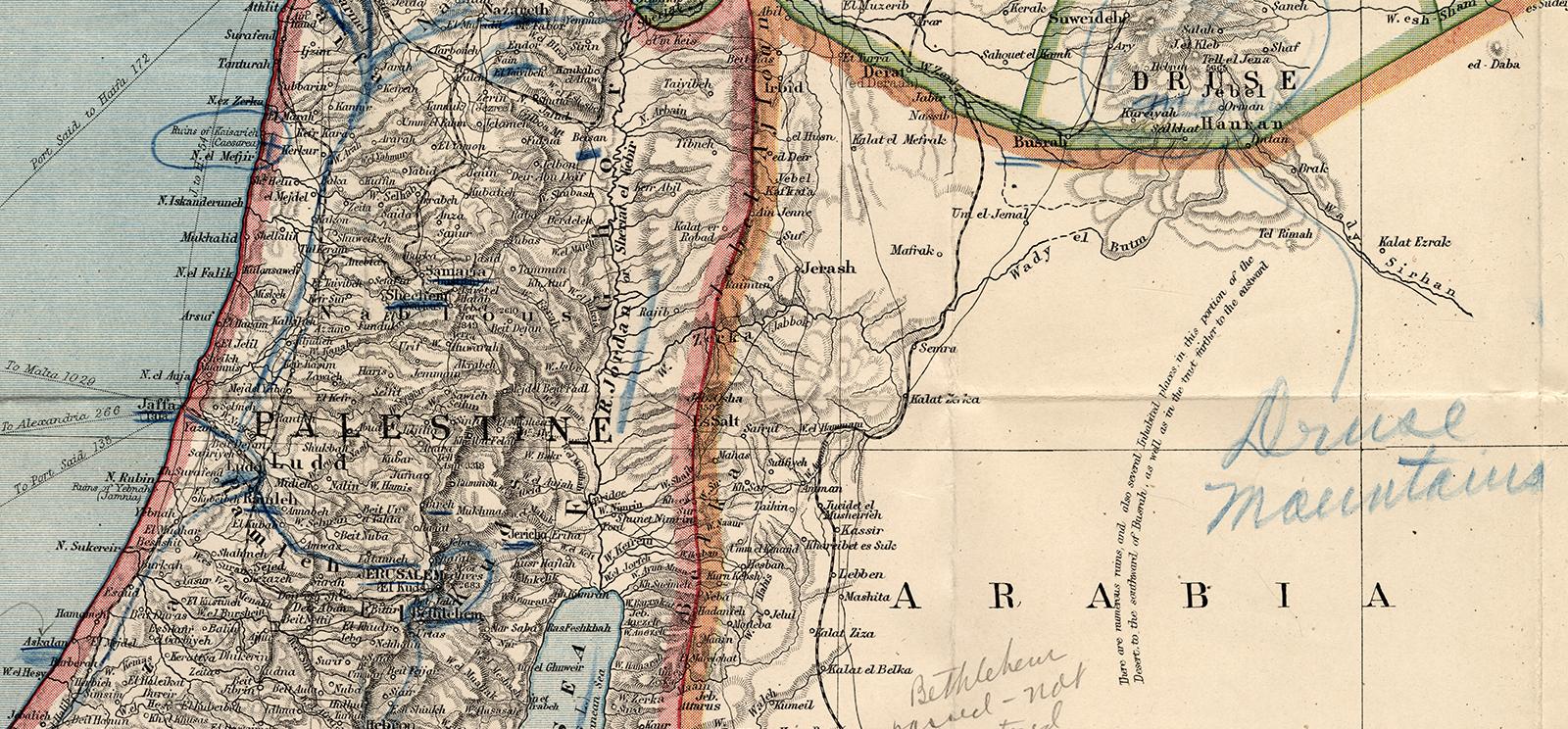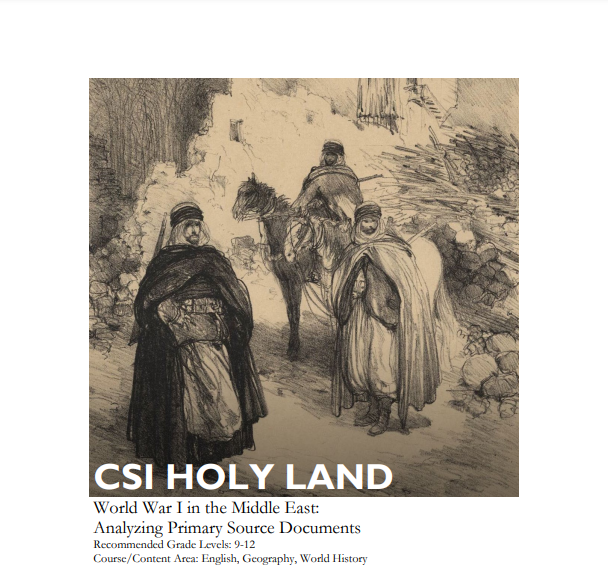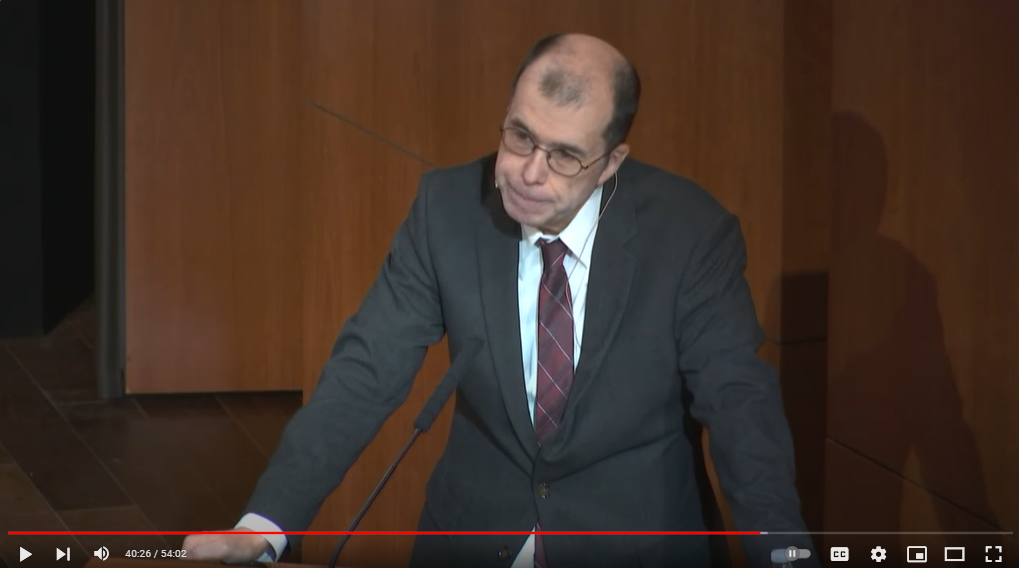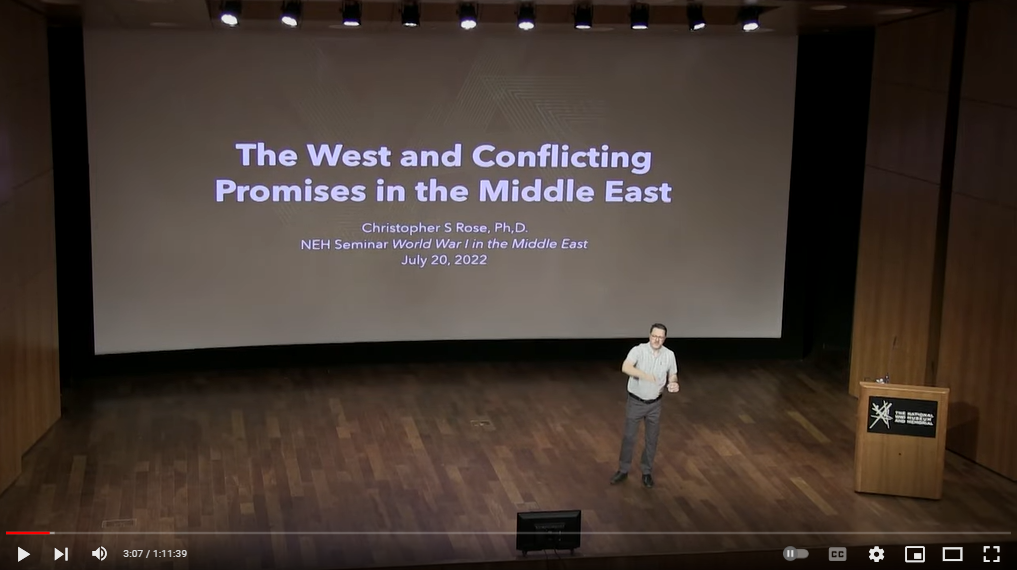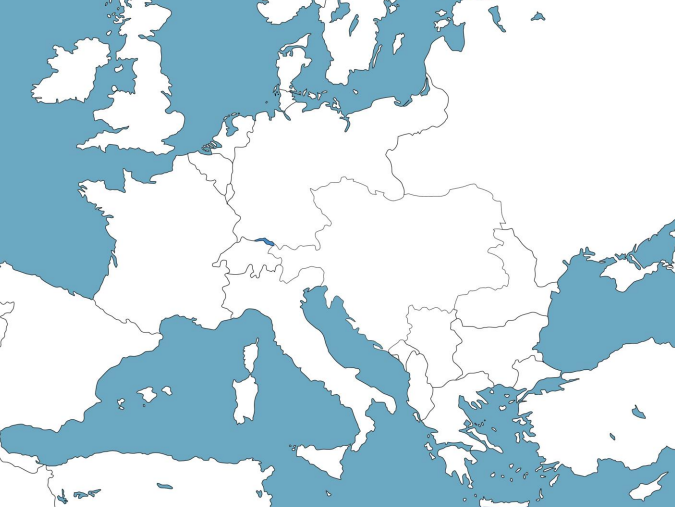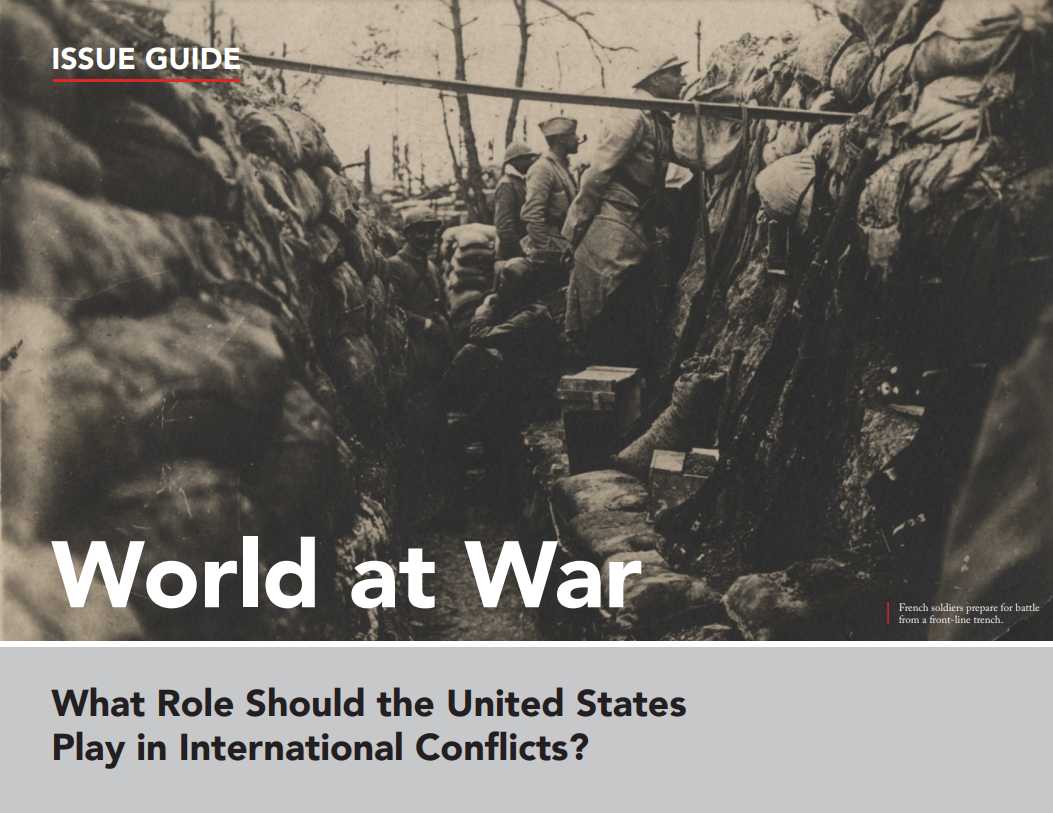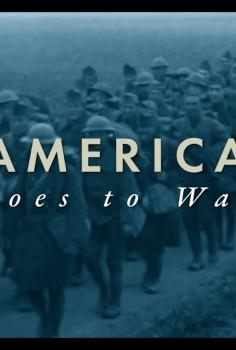History helps us understand the roots of our modern world.
Resources from the National WWI Museum and Memorial’s education archives can help explain decisions made during, and at the end of, WWI that inform the contemporary events and horrific challenges people are facing in the outbreaks of violence between Israel and Palestine.
Five facts from WWI history to help process the present:
1. The borders of the Middle East today reflect decisions made by Western European empires during and after WWI.
The Sykes-Picot Agreement, drafted secretly in 1916 between the British and French, drew lines for the Middle East that would create present-day nations such as Palestine, Jordan, Syria, Lebanon and Iraq. The British and French seized control of the majority of the Middle East, meaning rather than gaining independence, most Arabs were moved from the control of the Ottoman Empire to Western European empires.
To learn more about the Middle East during the war through primary sources, explore the lesson:
2. Between 1915 and 1919, Western European empires made many promises of land ownership and broke most of those promises.
Discussions and correspondence between British officials and Hussein ibn Ali, the Hashemite Amir (leader) of Mecca, promised an independent Arab state, ruled by the Hussein family, after the fall of the Ottoman Empire. In the Sykes-Picot Agreement in 1916, however, the British and French promised that land in the Middle East to themselves. Additionally, in the Balfour Declaration of 1917, the British promised Zionists they would establish a Jewish homeland in Palestine.
To learn more about these contradictory promises and their outcomes, watch this lecture:
“We Come as Liberators” - Britain’s Middle East Campaigns, 1917
Full transcript available.
3. The Zionist movement had various leaders with different goals.
Zionism formed at the end of the 19th century and defined Jews as a singular nation deserving of political sovereignty. This concept was integral to the Balfour Declaration; however, only some Zionist leaders wanted a specific homeland, and fewer still wanted it in Palestine in particular. Many leaders of the Zionist movement insisted land not be taken from anyone, recognizing the implications for future conflict.
To learn more about the Zionist movement, British involvement and the outcomes that triggered future conflict, watch this lecture:
The West and Conflicting Promises in the Middle East
Full transcript available.
4. Many of the European-drawn borders in the Middle East did not consider the political rights or self-determination of people living there.
With the Treaty of Versailles, European powers drew new borders in ways that primarily suited their colonial power ambitions. While some, like the King-Crane Commission, endeavored to create inclusive studies of the region, more powerful authorities brushed aside the ethnic, religious and cultural backgrounds of people living in the area – even when known.
To learn more about these borders, explore the MacArthur Memorial’s activity:
5. Palestine, and its fate, became a high priority to many leaders due to the deep faith roots of various religions in that geographic location.
People living in the region came from many different religious backgrounds, including Judaism, Islam and Christianity. But to outsiders, particularly Western Europeans, Palestine was the Biblical land and Jews were the ancestral people. These beliefs led to romantic, Orientalist notions that pushed forward ideas such as the Balfour Declaration.
As discourse escalates globally and continued violence seems to be the trajectory, it is important to consider what roles nations around the world play as decisions are made.
In working with students, one way to facilitate these discussions is with Issue Guides.
The Museum and Memorial offers one example with the question:
“What role should the United States play in international conflicts?”
You know history – now what?
When confronted with the horrifying situation for victims of violence in Palestine and Israel, it is common to feel helpless. Sometimes, whether a century ago or today, the sheer enormity of destruction and death humans unleash can be overwhelming and seem insurmountable.
As demonstrated in WWI, it is through collective action that peace is pursued and, at times, achieved. It takes people, communities and nations to come together to accomplish what can seem impossible. Your individual actions have impact.
Here are five concrete actions you can take today to make a difference:
1. Engage in civil dialogue.
Learn to disagree respectfully and in a way that allows for finding solutions. Sometimes, getting to know people you don’t agree with brings a new perspective. Make your best effort to model respectful and civil behavior and allow yourself permission to take breaks and set boundaries.
Conflict resolution takes real work and involves crucial conversations. Think about these key words: Respect, relate, connect.
Resources:
Disagree Better - National Governor's Association
Americans are deeply concerned and exhausted by the hyperpartisanship and polarization in our country, and rightly so. We’ve forgotten how to persuade without hating each other. But our nation’s history shows there’s a better way, and we all need to re-learn how to Disagree Better.
2. Donate.
As in WWI, relief organizations answered the call when faced with conflict.
-
Choose a nonpartisan group or a local charity that you trust. Some organizations have a recurring monthly donation option.
-
Donate blood. Blood was stored for future transfusions for the first time in WWI. Conflict exacerbates blood bank shortages across the globe. Donating locally has a global impact.
-
Donate food and supplies to refugee organizations, educational funds and other relief efforts.
3. Vote.
Your political representation matters. The United States went to war in 1917 to "make the world safe for democracy." A healthy American democracy impacts a strong global democracy. Vote in your local, state and national elections – every election makes a difference in your community.
Check your voter registration
Vote.gov helps you:
- Register to vote
- Find voter registration deadlines
- Check your registration
- Register after you've moved
- Change your political party affiliation
- Learn how to get a voter registration card
4. Contact your elected officials.
They work for you! Make a phone call, send a letter in the mail, write an email, send a fax or reach out via their official social media channels.
5. Learn how to talk to children about conflict.
Kids want to talk about the world around them. Create a supportive space for discussion by reminding them they are safe. Young people are more aware of what is going on in the world around them than you might think, and their questions may surprise you.
Resources:
Discussing War and Conflict: Resources for Educators, Parents and Caregivers
As images of war and conflict fill television screens and flood the internet right now, young people need the support of parents, caregivers and educators to grapple with their emotions and to understand the events.
